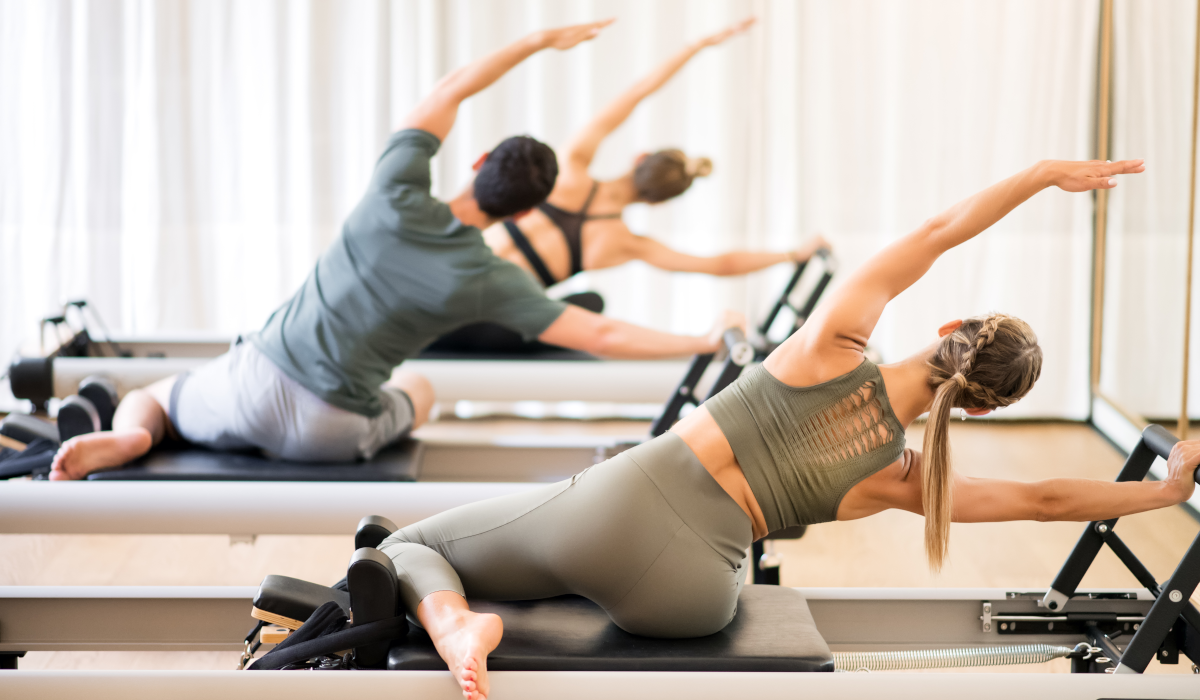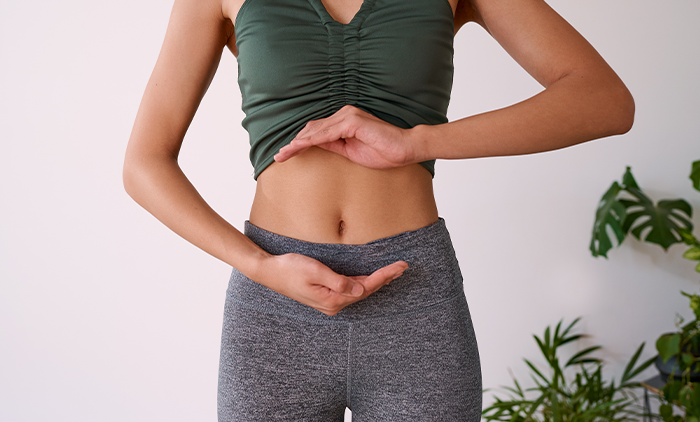Things you’ll learn… |
Are you looking for a way to exercise that suits your busy lifestyle? Are high-intensity workouts too exhausting for you?
Well, low-intensity workouts may just be what you’re looking for.
If you want to start your regular exercise journey, but going to the gym or doing high-intensity exercises doesn’t fit your lifestyle—there are still options for you.
Low-intensity exercises are the perfect solution if you have a busy life and need an easier way to fit working out into your schedule.
Here, we will delve into the benefits of low-intensity exercise, workout ideas and whether low-intensity training is enough to lose weight.
Ready? Let’s go.
What are low-intensity exercises?

A low-intensity workout is a form of physical activity which is performed at a relatively gentle pace, with minimal strain on the body.
These workouts are typically characterised by exercises that keep your heart rate at a moderate level and don't require maximal effort.
Low-intensity workouts are suitable for beginners, those recovering from injury or illness, or people looking to add lighter activity to their fitness routine.
Any exercise that keeps your heart rate at a steady pace of about 50% of its maximum ability and lasts for an extended period (at least 30 minutes) constitutes a low-intensity workout.
The body-boosting benefits of low-intensity cardio training
Low-intensity cardio training offers several body-boosting benefits that contribute to overall health and wellbeing.
While the exercises have many physical benefits, they also have a powerful effect on your mental health, making them so valuable for feeling good and boosting your self-esteem.
Here are some of the key advantages of low-intensity cardio training…
- Better heart health
- Improved fat-burning and weight management
- Increased aerobic capacity
- Reduced stress and anxiety
- Joint health and mobility
- Improved recovery and active rest days
- Enhanced longevity and quality of life
- Accessibility and versatility
Related: 10 Ways to lose weight without exercise

Examples of low-intensity exercises
Do you like the sound of low-intensity exercise but don’t quite know where to start? Here’s a list of low-intensity workout ideas to make you feel great.
Walking- Walking at a leisurely pace is one of the simplest forms of low-intensity exercise. You can walk outdoors in your neighbourhood, at a park, or indoors on a treadmill.
- Yoga involves gentle stretching, breathing exercises, and relaxation techniques. It's great for improving flexibility, and balance, and reducing stress.
- Swimming is a low-impact exercise that provides a full-body workout. It's easy on the joints and suitable for people of all fitness levels.
- Cycling at a moderate pace, whether outdoors or on a stationary bike, can be an effective low-intensity cardio workout.
- Pilates focuses on core strength, flexibility, and body awareness through controlled movements. It's gentle yet effective for improving muscle tone and posture.
- Tai Chi is a slow, meditative form of martial arts that promotes relaxation, balance, and flexibility.
- Dancing at a moderate intensity can be a fun way to get moving while improving cardiovascular health and coordination.
- Spending time stretching major muscle groups can help improve flexibility, reduce muscle tension, and enhance relaxation.
What’s the difference between high-intensity and low-intensity exercise?
High-intensity exercise and low-intensity exercise differ in certain key areas, including their effects on the body, intensity levels, and what they can do for you.
Let’s take a look.
Intensity level
High-intensity exercise involves performing physical activities at a vigorous level where your heart rate is elevated to a significant extent. This typically means exercising at 70 to 85% or more of your maximum heart rate.
Low-intensity exercise involves performing physical activities at a more relaxed pace, where your heart rate remains lower, typically between 50 to 65% of your maximum heart rate.
Duration
High-intensity exercise sessions are typically shorter in duration due to the higher intensity level. They often last between 10 to 30 minutes.
Low-intensity exercise sessions can be longer in duration since they are less taxing on the body. They can last anywhere from 30 minutes to several hours, depending on the activity.
Energy systems used
High-intensity exercise primarily relies on anaerobic energy systems. These systems provide rapid bursts of energy but are not sustainable for prolonged periods.
Low-intensity exercise predominantly utilises aerobic energy systems. These systems can sustain energy production over longer durations by utilising oxygen to break down carbohydrates and fats.
Effects on the body
High-intensity exercise can lead to greater cardiovascular improvements, increased calorie burn both during and after exercise (due to the afterburn effect or excess post-exercise oxygen consumption), and improved anaerobic fitness, including power and speed.
Low-intensity exercise is beneficial for improving cardiovascular health, promoting fat oxidation (utilising fat as a fuel source), enhancing endurance, reducing stress, and aiding in recovery from high-intensity workouts.
Risk of injury
High-intensity exercise carries a higher risk of injury due to the increased stress placed on the body, especially if proper form and technique are not maintained.
Low-intensity exercise poses a lower risk of injury since the movements are typically gentler and less demanding on the muscles and joints.
How low-intensity exercise helps you lose weight

Low-intensity exercise can contribute to weight loss in a number of ways. Here’s how.
Bigger calorie burn: While low-intensity exercise may not burn as many calories during the activity itself, it can still contribute to overall caloric expenditure.
Improved fat burn: Low-intensity uses fat as a fuel source. So, by getting stuck into low-intensity workouts, you can boost your body's ability to burn stored fat for energy, promoting fat loss over time.
Better metabolism: Regular low-intensity exercise can help boost your metabolism, albeit to a lesser extent than high-intensity exercise. As you become more active, your body may increase its metabolic rate, leading to more efficient calorie burning even at rest.
Appetite regulation: Low-intensity exercise can help regulate appetite hormones, which may reduce cravings and overeating.
Maintenance of lean muscle mass: While low-intensity exercise may not build muscle mass as effectively as resistance training or high-intensity interval training (HIIT), it can still help preserve existing muscle mass. This is important for maintaining a healthy metabolic rate and preventing the loss of muscle tissue, which can occur during weight loss.
Reminder: When performed consistently over time, even moderate activities like walking or gentle cycling can add up to a significant calorie deficit, especially when combined with a healthy diet. You’ve got this.
So, are low-intensity workouts better for you?
In summary, low-intensity workouts may be ‘better’ suited for you depending on various factors, including your fitness goals, current fitness level, health status, and personal preferences.
A low-intensity workout can offer several benefits that may make them more suitable for certain individuals or situations.
If you’re a beginner, an older adult, have mobility issues, or recovering from injury, this may be a good way to train your body.
If you need a less physically demanding exercise, which is sustainable and easier to be consistent to maintain an active lifestyle, try a low-intensity workout.
The slower pace and lower impact nature of these workouts minimise the risk of injury and can serve as active recovery sessions on days when you're not engaging in more intense exercise.
The relaxation techniques and mindfulness practices present in low-intensity workouts make them the go-to choice for so many of us. Some exercises can really help reduce stress, improve mood, and promote mental wellbeing—which will help you reach your weight loss goals with more confidence.
If this sounds like what you’re after, you should give it a go. Here’s to your low-intensity training journey. You’ve got this.
FAQs
Can you build muscle with low-intensity exercise?
Building muscle primarily requires challenging the muscles through resistance training, which typically involves lifting weights or using resistance bands at a moderate to high intensity.
Low-intensity workouts, while beneficial for other aspects of fitness such as cardiovascular health, flexibility, and stress reduction, are generally not as effective for building muscle mass.
Are squats low-intensity?
Squats can be adjusted to be either low or high intensity depending on the weight lifted, the number of repetitions, and the speed at which they're performed.
Bodyweight Squats (low intensity): Performing squats without added weight is generally considered a low-intensity exercise.
These types of squats can still be beneficial for improving lower body strength, mobility, and endurance, especially for beginners or those with limited fitness experience. These movements are low-impact, and you can perform them at a controlled pace.



